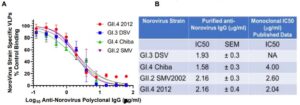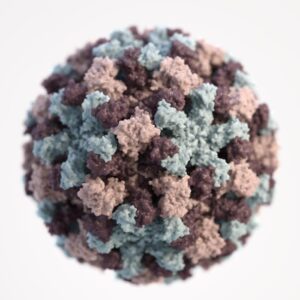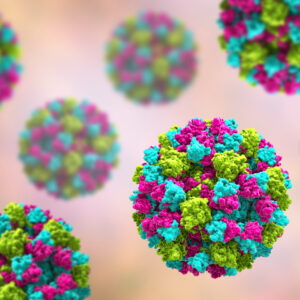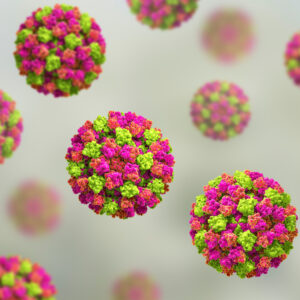
NTRL assay: Neutralization of Norovirus VLPs by purified polyclonal anti-Norovirus. A) Dose response curves from Norovirus neutralization assay, using anti-Norovirus against immunizing Norovirus VLPs. B) IC50 for anti Norovirus and comparison to published monoclonal Ab data using the same assay.
Anti-Norovirus VLP Polyclonal Antibody
Price range: $475.06 through $1,425.18 excl. VAT
Anti-Norovirus VLP polyclonal antibody comprises a mixture of purified goat polyclonal IgG to Norovirus virus-like particle (VLP) GI.3 DSV, G1.4 Chiba, GII.4 2012 Sydney, and GII.2 SMV. Antibody is neutralizing.
Please note: animal products or animal by-products containing poultry or livestock derivatives (such as chicken, sheep or goat polyclonal antibodies) may require an Import Permit. Permits must be completed and submitted by the Importer (Customer). Please contact your local regulatory trade body for further information.
ANTI-NOROVIRUS VLP POLYCLONAL ANTIBODY
Anti-Norovirus VLP polyclonal antibody comprises a mixture of purified goat polyclonal IgG to Norovirus virus-like particle (VLP) GI.3 DSV, G1.4 Chiba, GII.4 2012 Sydney, and GII.2 SMV. Antibody is neutralizing.
PRODUCT DETAILS – ANTI-NOROVIRUS VLP POLYCLONAL ANTIBODY
- Anti-Norovirus polyclonal IgG antibody.
- Purified from Goat immune sera
- Presented in liquid format.
BACKGROUND
Norovirus (NoV), a small non-enveloped, single-stranded, positive-sense RNA virus (seen as 27-nm virus-like particles by electron microscopy) belongs to the Caliciviridae family of viruses. Six norovirus genogroups have been identified to date, which are further subdivided into genotypes. Noroviruses responsible for human disease are found within genogroups GII, GI and GIV and norovirus infections are caused, in decreasing order of frequency, by GII (mostly GII.4), GI, and, to a very limited extent, GIV (some genotypes of which also infect pigs). Noroviruses have a high mutation rate and numerous genotypes have been identified which are associated with human disease. Despite the high mutation rate, the genotype GII.4 has been identified as the most common cause of norovirus outbreaks in humans worldwide (Karst, SM).
Previously known as Norwalk virus, it was first identified in stool specimens collected during an outbreak of gastroenteritis in Norwalk, OH, and was the first viral agent shown to cause gastroenteritis. Norovirus is now major cause of non-bacterial outbreaks of acute gastroenteritis worldwide (winter vomiting disease). Norovirus can infect individuals of all ages and can be a major cause of gastroenteritis in closed communities such as schools, care-homes, hospitals and cruise ships. Symptoms of NoV infection develop rapidly and include vomiting, nausea, abdominal cramps and diarrhoea (Robilotti, E). In most cases, norovirus infection is a self-limiting disease that may last 1- 3 days but can cause complications in very young, elderly and immunocompromised individuals. In some severe cases, norovirus infection can result in dehydration, hospitalisation and death. (CDC).
Norovirus is highly contagious and a number of factors enhance the transmissibility of norovirus, including the small inoculum required to produce infection (<100 viral particles), prolonged viral shedding, and its ability to survive in the environment (it is also resistant to most household disinfectants). Transmission of NoV primarily occurs through the faecal oral route and through contact with infected individuals, contaminated clothing, surfaces, food and water. (CDC).
REFERENCES
- Karst SM. (2010). Pathogenesis of noroviruses, emerging RNA viruses. Viruses.Mar;2(3):748-81.
- Robilotti E, Deresinski S, Pinsky BA. (2015). Norovirus. Clin Microbiol Rev.Jan;28(1):134-64.
- Centers for disease control and prevention: Norovirus, Clinical overview



